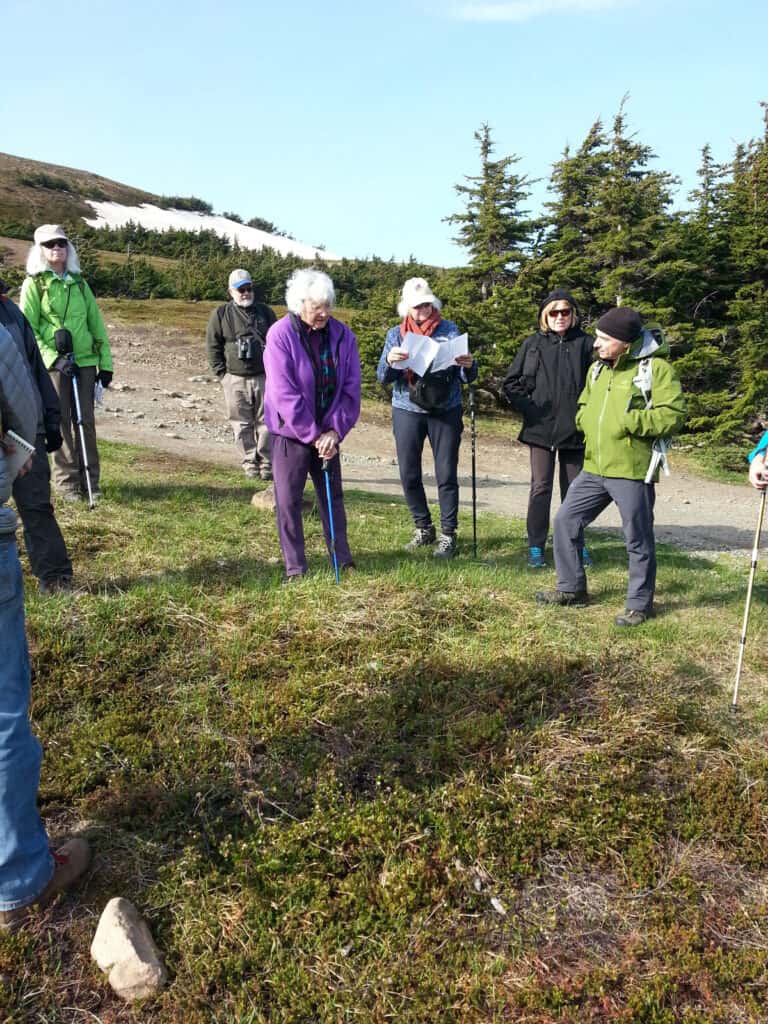Ten of us gather around Verna Pratt on a clear sunny day in May in the mountains above Anchorage, Alaska. Verna wrote the books on Alaskan wildflower identification—two of them. Anyone who is curious about the names of the flowers along the trails, in the bogs, beside the roads, or on the tundra carries Verna’s books stuffed in their backpacks or tucked in the glove boxes of their cars. The books are color-coded so that those of us who don’t know scientific names can flip to a color tab and find the common name of the flower growing beside us. The pages of my twenty-five year old copy of Verna’s Field Guide to Alaskan Wildflowers, are water-stained, crinkled, splotched with dirt and the occasional smashed mosquito. It is so well loved I’ll never give it up. Within it, memories of hikes, river and backpacking trips, picnics, and the seemingly endless days of Alaskan summers. Since I first bought the book, I’ve longed to take a field class with Verna, but work, grad school, raising a daughter and life kept me from signing up. Now that neither of us is getting any younger, I’m finally learning from the master.
To study alpine wildflowers you must walk slowly. People on their way to the mountain top race around you, looking either annoyed or puzzled to find ten people clogging the trail examining barely visible pink blueberry blossoms. You should not be afraid to get personal with the flowers, to kneel in the damp tundra, put your nose right up to a tiny flower, and examine it through a magnifying glass attached by a string to your neck.
Verna leads us up a steep, rocky trail, through mountain hemlock and above tree line. Her knees are not what they used to be, one hip is bothering her, and she explains that she may have to stop frequently to catch her breath. But, as we follow her, she climbs steadily but slowly, relying on one hiking pole which doubles as her pointer. There is so much I would have simply walked past if I had not slowed down: the tiny white alp lily, the clustered pink alpine azalea, the fuchsia-colored wooly lousewort.
At the edge of a melting snow field, a cluster of leaves no bigger than my pinky fingernail pokes out of the flattened grass. Verna points at it with her stick. Gentian, she says. I don’t know how she can tell anything from this miniscule clutch of green. Tiny stalks will soon reach up bearing dark purple tubular flowers. On a sunny day they will flare open at the top and resemble tiny vases. So much to accomplish in such a short time. So much to see if you forget about getting to the top.

